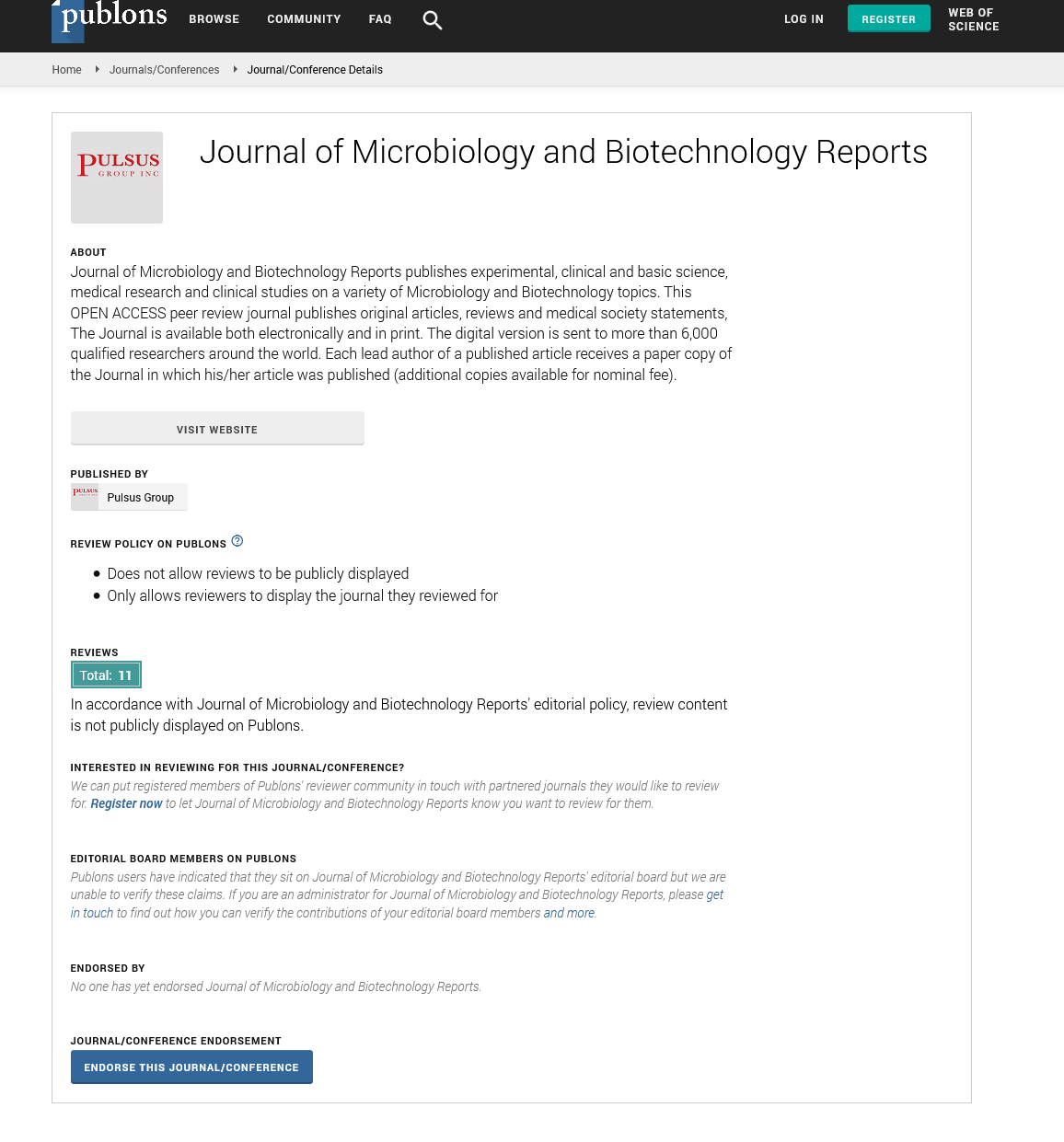Advancments of Lipid nanoparticles in Biotechnology
Received: 03-Nov-2021 Accepted Date: Nov 17, 2021; Published: 24-Nov-2021
This open-access article is distributed under the terms of the Creative Commons Attribution Non-Commercial License (CC BY-NC) (http://creativecommons.org/licenses/by-nc/4.0/), which permits reuse, distribution and reproduction of the article, provided that the original work is properly cited and the reuse is restricted to noncommercial purposes. For commercial reuse, contact reprints@pulsus.com
Editorial
Biotechnology is a broad discipline in which biological processes, organisms, cells or cellular components are exploited to develop new technologies. New tools and products developed by biotechnologists are useful in research, agriculture, industry and the clinic. Lipid nanoparticles are going into billions of arms in the form of COVID-19 mRNA vaccines, delivering, at last, on the pledge of nanotechnology to revise medicine delivery. Revolutions have the capability to alter the course of history. In the case of nanotech- grounded medicine delivery, with numerous promising operations being explored, it looks like lipid nanoparticles have done just that. Nearly exactly 1 time ago, UK controllers granted exigency- use authorization to the COVID-19 mRNA vaccine developed by Pfizer and BioNTech, followed by blessing of Moderna’s mRNA vaccine. In numerous ways, this was a major moment. Not only were these vaccines the first mRNA vaccines authorized for clinical use, they were also developed within only 3 months of sequencing the viral genome of SARS-CoV-2 and showed an astonishing efficacity of> 90 in precluding COVID-19 complaint. Without mistrustfulness, the blessing of the COVID-19 mRNA vaccines also marked a corner in nanotechnology. Without lipid nanoparticles, COVID-19 mRNA vaccines would not live. The clinical success of COVID-19 mRNA vaccines is erected on numerous times of abecedarian and clinical exploration, from the design of tools to produce biologically active mRNA to the metamorphosis of mRNA into a medicine platform. Importantly, the lipid nanoparticles needed for mRNA delivery had to be finagled and optimized to eventually enable safe and effective mRNA vaccines. This was by no means an easy task. The root for lipid- grounded medicine delivery systems was laid further than 40 times ago in the lab of Pieter Cullis. We talked to Pieter about how his introductory exploration on lipid asymmetry handed the foundations for the encapsulation of nucleic acids into lipid systems. The story of lipid nanoparticles impeccably exemplifies the significance of abecedarian wisdom in nanomedicine; without a thorough understanding of lipid and nanoparticle geste, mRNA delivery would not have been possible. Yet, to get technologies out of the lab and into the clinic, lesser coffers and collaborations across fields are demanded, beyond the academic system. The beauty of lipid nanoparticles is that they can serve as a platform technology, in which the same nanoparticle is suitable to deliver a variety of nucleic acids. As Pieter puts it “ Once you know the protein you wish to silence or express, the needful siRNA or mRNA can be synthesized in a month or two, and can be packaged in a lipid nanoparticle in a day or two to give a targeted medicine.” Indeed, several lipid nanoparticle – mRNA vaccines against other contagious conditions, colorful cancers and inheritable diseases are formerly in clinical trials or clinical studies, as bandied in a Review in this issue by Yizhou Dong, Tal Zaks, Robert Langer and associates, and new mRNA flu vaccines have just entered clinical trials. The composition and chemistry of lipid nanoparticles can further be acclimatized to target specific apkins, and experimenters have formerly finagled designs that allow delivery of mRNA directly into the lungs by inhalation. The community is also working on perfecting large-scale manufacturing and temperature stability of lipid nanoparticles to address problems associated with cold chain conditions and distribution. After all, vaccines do n’t save lives — vaccinations do. mRNA vaccines may not have entered the Nobel Prize this time, but their clinical success will have a continuing impact beyond COVID-19. Easily, lipid nanoparticles are on a roll, and the nanomedicine community will clearly subsidize on their clinical success. There are plenitude of operations beyond vaccines to explore and nanoparticle designs to be bettered. Perhaps there are indeed better ways to deliver medicines into cells? The nanotech future will tell. The revolution has only just begun.
Acknowledgements
The authors are grateful to the journal editor and the anonymous reviewers for their helpful comments and suggestions.
Declaration of Conflicting Interests
The authors declared no potential conflicts of interest for the research, authorship, and/or publication of this article.





